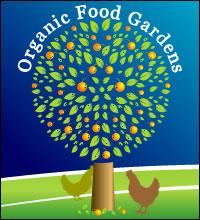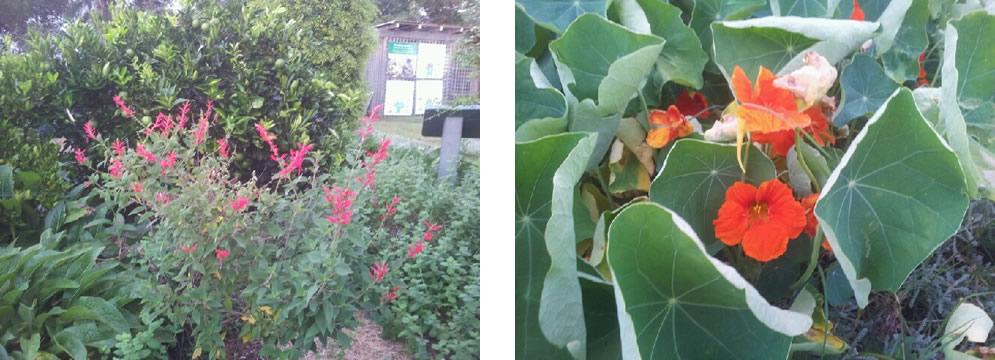
Companion Planting
Companion planting is growing vegetables, flowers and herbs together to create a healthy garden. Companion planting can provide nutrients to the soil.
Colourful flowers attract pollinators and beneficial insects to the garden. Bees and insects that are attracted by colour and will pollinate flowers and this increases the chances of fruit.
Flowers attract lady beetles who eat aphids, water in ponds attracts dragonflies who prey on pest insects and ponds also attract lizards who eat snails and slugs.
Dill attracts beneficial wasps.
Good companions like the legumes ( vegies that grow pods ) like beans and peas release nitrogen from their roots which benefits leaf growing vegies like lettuce.
Other good companions include:
- Basil that repels flies and mosquitoes,
- Chives that have a strong smell that confuses thrips, chives are often planted with roses.
- Lots of herbs planted together create a combination of smells which confuse and deter pests.
- Celery repels white cabbage butterflies,
- Nasturtium will deter aphids and bugs,
- Marigolds will keep soil free of nematodes
- Petunias will repel tomato worm.

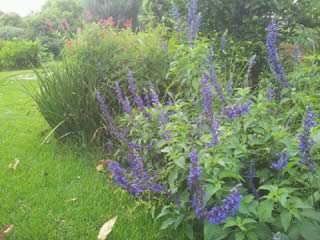
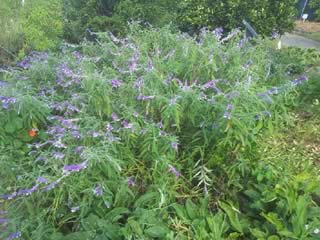
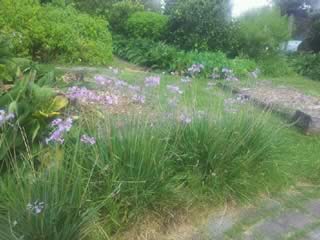
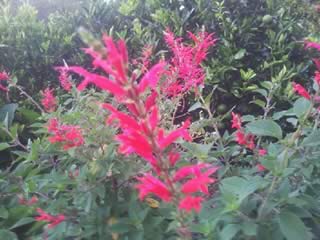
The use of natural vegetables, herbs and flowers in combination together will decrease the need for using chemicals in the garden. It’s working with nature.
See under Seasonal Tasks / Spring and Summer for companion planting combinations and always remember to practice crop rotation.
Top Images: Pineapple Sage (left) & Nasturtiums (right)
